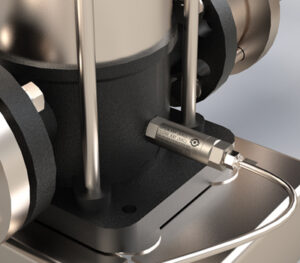ThermOmegaTech® is excited to announce its pump thermal relief valves’ NSF/ANSI 61 certification. NSF/ANSI 61 and 372 is an American National Standard that establishes minimum health-effects requirements for the chemical contaminants and impurities indirectly imparted to drinking water from products, components, and materials used in drinking water systems.
ThermOmegaTech’s ECONO/HAT-RA is a thermal relief valve designed to safeguard domestic water supply booster pumps from high-temperature damage caused during system abnormalities like deadheading, construction usage, and VFD (Variable Frequency Drive) troubleshooting errors, all while reducing water waste and increasing overall system efficiency.
“Our thermal relief valves, the ECONO/HAT-RA valves, are often used on pump systems with an NSF/ANSI 61 requirement. Because of this, our customers must obtain approval to use our valves with every system sold.
The benefit of this certification is that the approval will no longer be needed on the customers’ end. This streamlines sales and encourages system engineers to use our products without fear of added internal cost,” explains OEM Sales Manager Tim McCollum, who was instrumental in the valves’ certification.
In addition to the stainless steel ECONO/HAT line, the valves that are now certified include the stainless-steel valves in the HAT and IC lines:
- HAT and HAT/RA Valves
- HAT Valves with Leak Port
- HAT/RA HP – High-Pressure Thermal Relief Valves
- HAT/FP and HAT/SP – Freeze and Scald Protection Valves
- IC/FP and IC/SP – Freeze and Scald Protection Valves
“Listening to our customers is essential to our business, and obtaining this NSF/ANSI 61 certification to streamline the valve ordering process will save time and money for our customers, something ThermOmegaTech® strives to do daily,” McCollum says.
Contact us here.
Download the Flyer
